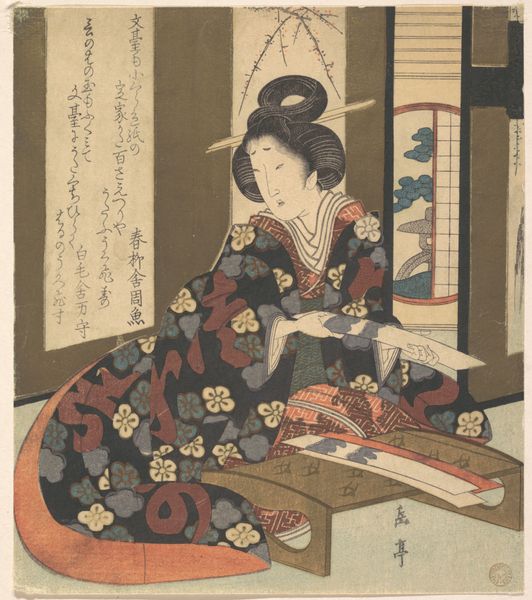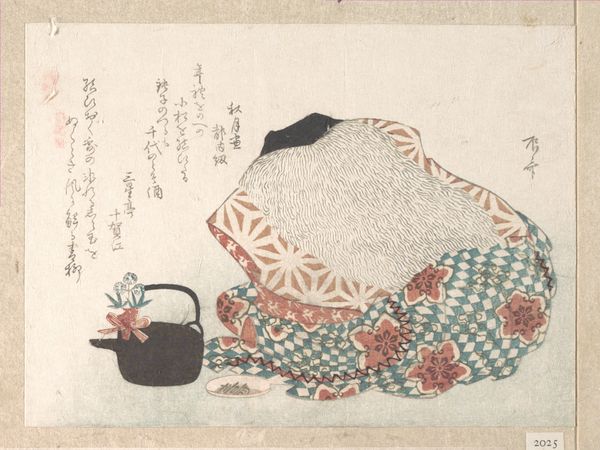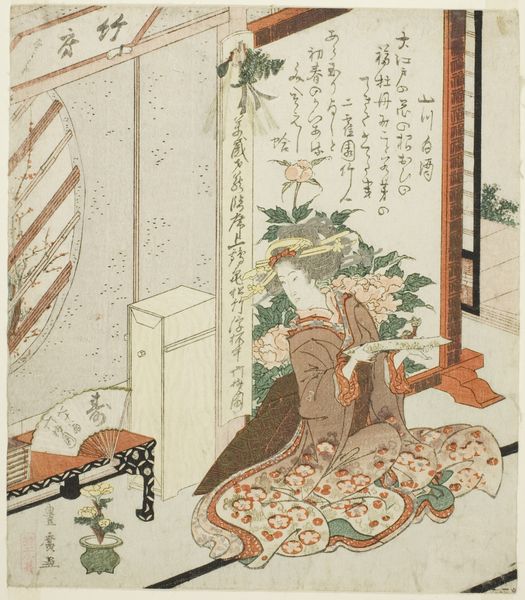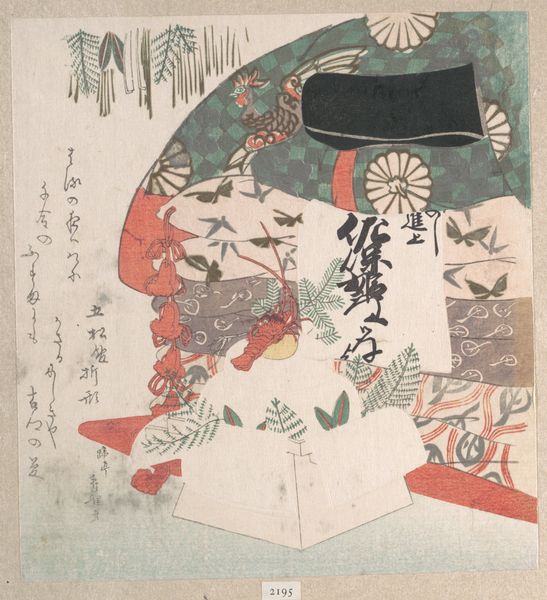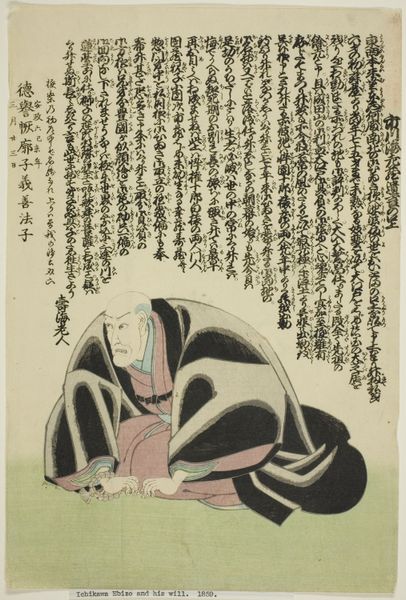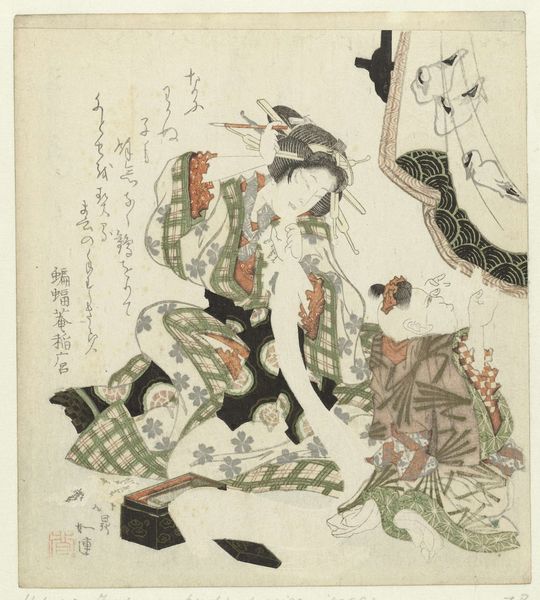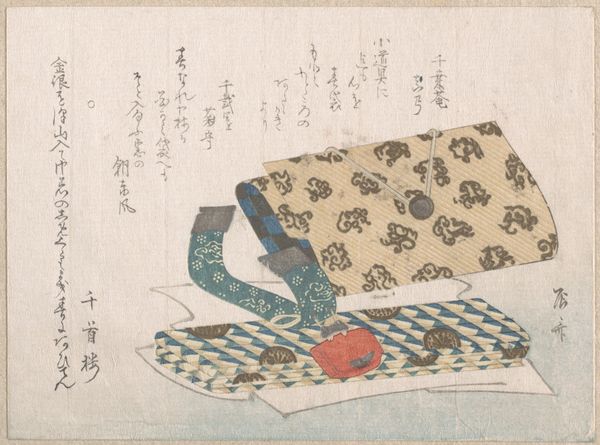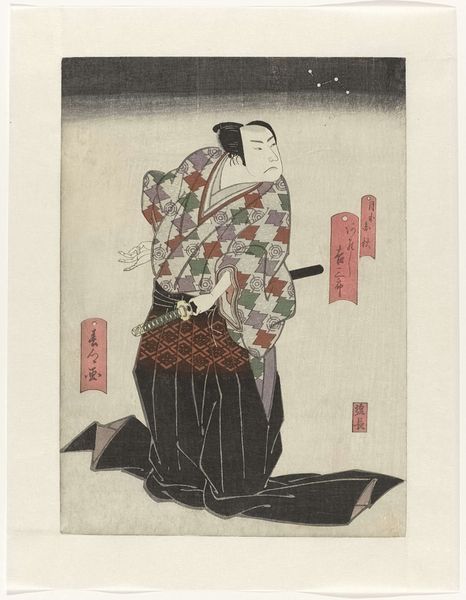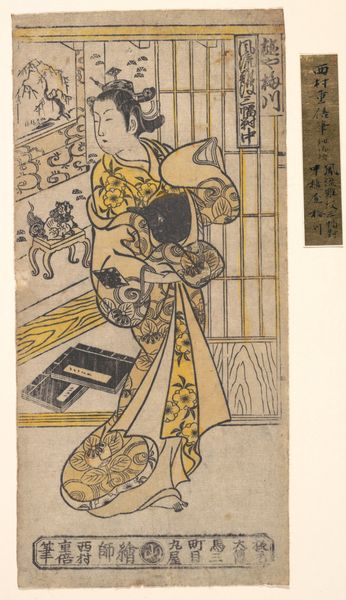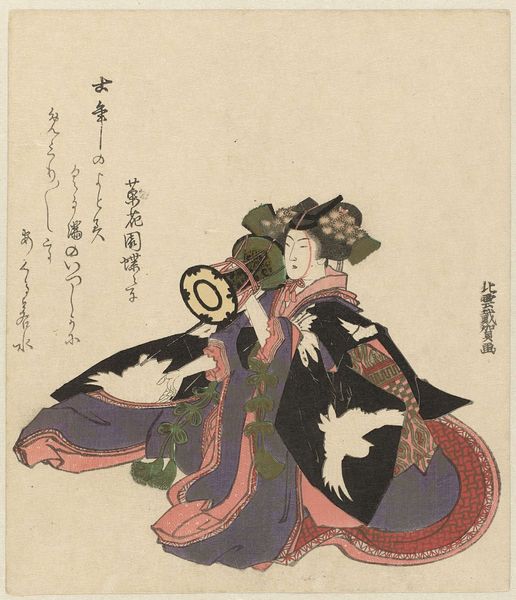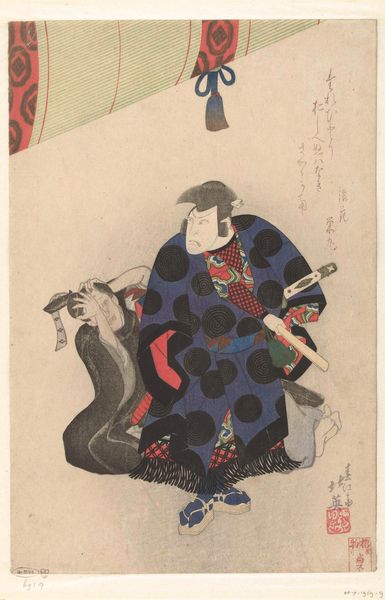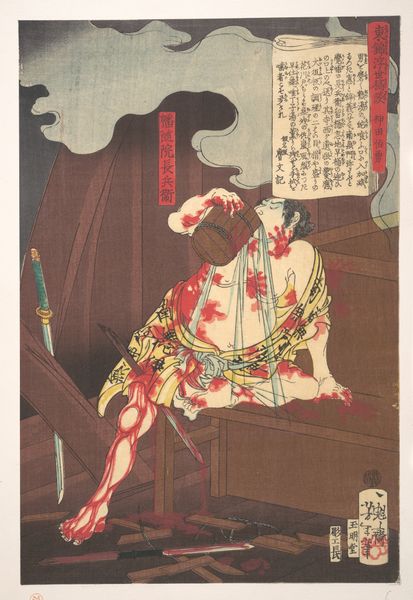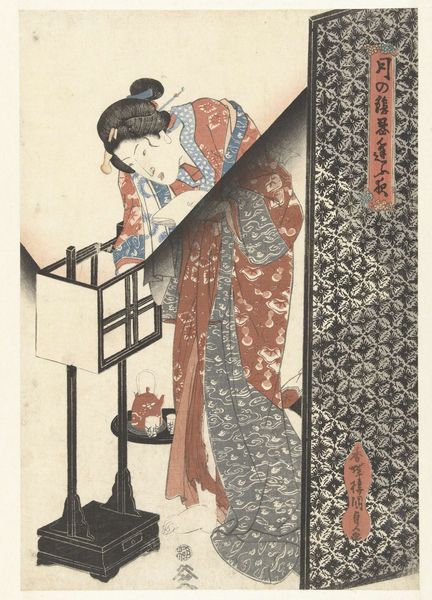
silk, print, textile
#
silk
# print
#
asian-art
#
textile
#
ukiyo-e
#
genre-painting
Dimensions: 21.1 × 18.5 cm (8 5/16 × 7 1/4 in.)
Copyright: Public Domain
Editor: Here we have "Scenting a kimono with incense" by Yanagawa Shigenobu, an undated print on silk, part of the Ukiyo-e tradition. The composition is striking, focusing on a draped kimono. What catches my eye is how intimate and almost ritualistic the scene feels, but I wonder how it reflects the cultural context it was created in? Curator: That feeling of intimacy is precisely what Shigenobu aimed for. Consider Ukiyo-e as a popular art form, flourishing in the Edo period, a time of relative peace but also strict social hierarchy. Images like this, while seemingly simple, speak to the rising merchant class who sought a refined lifestyle and an escape from social constraints. The kimono, so meticulously depicted, becomes a symbol of status, artistry, and the pursuit of beauty. How does the act of scenting a kimono with incense strike you? Editor: It feels like more than just cleaning. There’s almost a sense of anticipation, maybe preparing for a special occasion. But why emphasize this domestic scene through art? Curator: Because everyday life *is* political. Ukiyo-e prints like these offered glimpses into a world of pleasure and refinement that was aspirational and subtly subversive. The meticulous detail of the kimono's textile and the implied fragrance speak to a level of luxury carefully consumed. We must remember the restrictions placed on displays of wealth and expression, even for the wealthy merchant class. In that light, how does this "genre painting" now resonate? Editor: I see. The act of scenting the kimono becomes an act of cultural performance. The art shows the patrons a lifestyle to subtly aspire towards that promotes the culture and the people who practice that craft. It highlights their identity through a material, making it a quiet statement. Curator: Exactly. The scene encapsulates much more than meets the eye; the politics of imagery are always in play. We're reminded that art is inseparable from its historical and social backdrop. Editor: So, the print captures a fleeting moment of refined daily life but speaks volumes about the cultural aspirations of its time. I’ve definitely gained a new perspective on how historical context can shape our reading of a simple domestic scene. Thank you!
Comments
No comments
Be the first to comment and join the conversation on the ultimate creative platform.
